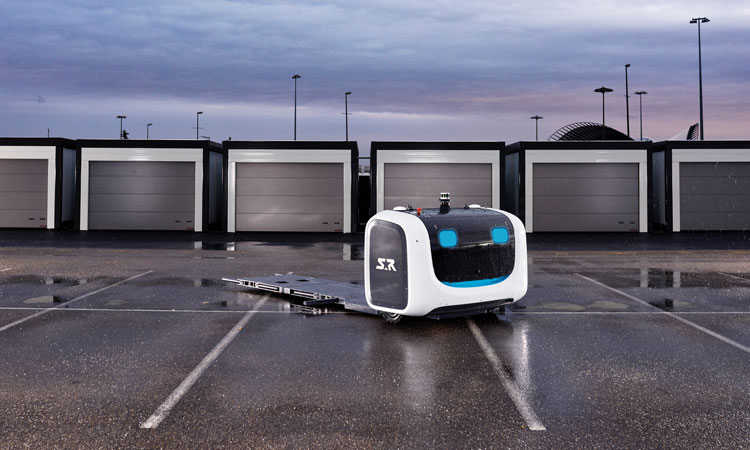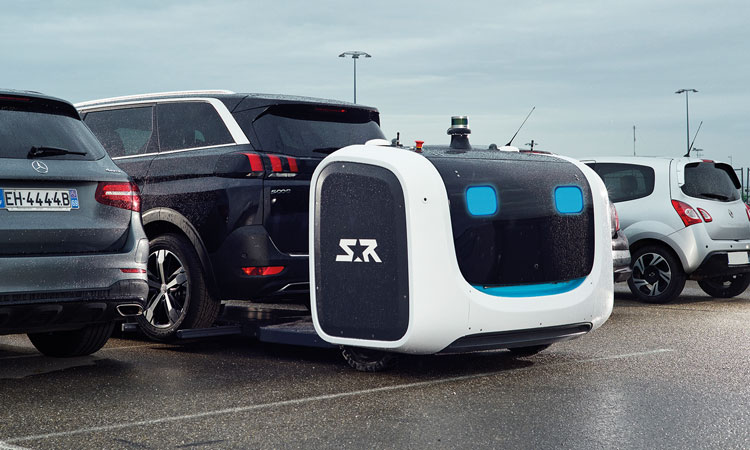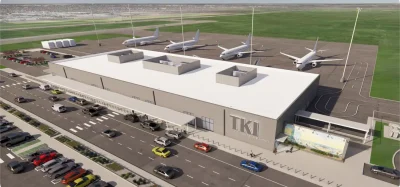Robots may soon be parking cars at Gatwick Airport
Posted: 28 January 2019 | Eve De Clerk (International Airport Review) | No comments yet
Gatwick Airport is set to trial robots to park passenger’s cars in the long-stay car park at the South Terminal. The trial is due to take place over three months in conjunction with technology provided by Stanley Robotics.


In a planning application to Crawley Council, Gatwick Airport state that they will be using robots to park passengers cars to increase capacity.
The application states: “The trial area, comprises an existing area of surface parking which is currently configured for self parking. Zone B currently accommodates some 2,350 spaces. During the trial this will reduce to 2,180 self-park spaces and 270 robot valet parking spaces.
“This area will be fenced off from the remainder of the Long Stay Car Park with new fencing. The primary element of the development is the installation of eight cabins on the east side of the trial area. Each cabin is expected to be some 4.6m x 8.7m x 3.2m high. Each will have two secure access controlled entrances one for the customer to drive their vehicle in and exit from and on the opposite side an entrance for the robot valet to access the car from.
Join us live: Shaping the Next Generation of Hold Baggage and Air Cargo Screening
Join us live for an insightful webinar on 11th December at 14:00 GMT, in collaboration with Smiths Detection, as we explore the strategic balance of operational efficiency, regulatory compliance, and sustainability in high-volume security environments.
This session offers a focused look into future-proofing your security strategy.
Key learning points
- Cost Reduction: Strategies to minimize bag travel time while simultaneously reducing operational costs.
- Regulatory Roadmap: Insights into the next wave of regulatory changes and their impact on future investment decisions.
- Sustainable Systems: Practical approaches to building sustainability into security systems and lowering the total cost of ownership (TCO).
- Scalable Solutions: Real-world examples of scalable systems supporting current airport growth and preparing for tomorrow.
Register now for expert insights, case studies, and actionable strategies on operational efficiency!
“At the customer entrance side there will be a canopy to provide rain cover for the customer as they enter their details on the access control panel. The vehicle cabins will be built using a steel frame, vertically laid composite wall cladding and trapezoidal roof panel construction system. In addition small technical room and temporary control centre with welfare arrangements will be provided for the duration of the trial. These are proposed to be a self-contained temporary portacabins.”
Robotic car parking is being explored by Gatwick Airport Limited in response to their desire to optimise the existing car parking infrastructure.
The technology is being supplied by Stanley Robotics, and they have nicknamed the robots ‘Stan’. Previously this technology has been trial at Lyon Airport; co-founder and COO of Stanley Robotics, Stéphane Evanno, said: “We call it a valet parking robot because people just need to drop off their car at the entrance of the car park and then they can basically leave and catch a flight, but it’s doing more than just valet parking. It’s a machine that autonomously detects a vehicle, slides under it, lifts it gently by the wheels and moves it to a storage area.”


Evanno commented: “Because the car is stored in a non-public area, you are sure that you will not have somebody who will damage your car when opening the doors. Your car is protected from damage and the whole storage area is closed to the public, so it’s safe for the integrity of the car and for the owners.”
The trial is due to begin in August 2019, ahead of the busiest time of the year for the airport.
The application states that “the system works when the passenger drives into the car park area and parks their car in one of the numbered vehicle cabins. A touch screen kiosk on the vehicle cabin will allow customers to confirm their parking booking. The passenger then leaves their vehicle (retaining their keys) and makes their way, as usual, to the terminal (in this case via. the long stay car park shuttle bus).
“Once the passengers has left the cabin the vehicle cabin is automatically secured. The valet robot then collects the car by sliding its carrier underneath the car and takes it to a parking space in the secured parking area. The car parking service is connected to the customer’s flight information so that upon a passenger’s return the car is retrieved by the robot and returned to a designated vehicle cabin ready for the passenger’s arrival.”
The International Airport Summit is open for registration!
Date: 19 – 20 November 2025
Location: JW Marriott Hotel Berlin
At our flagship event of the year, we will dive into the future of airport operations, with expert-led sessions on passenger experience, innovative smart technologies, baggage handling, airside operations, data, security, and sustainability.
This is where global airport leaders come together to share insights, challenges, and real-world solutions.
Limited complimentary passes are available for eligible professionals – first come, first served!
Related topics
Airport development, Capacity, New technologies, Passenger experience and seamless travel


















